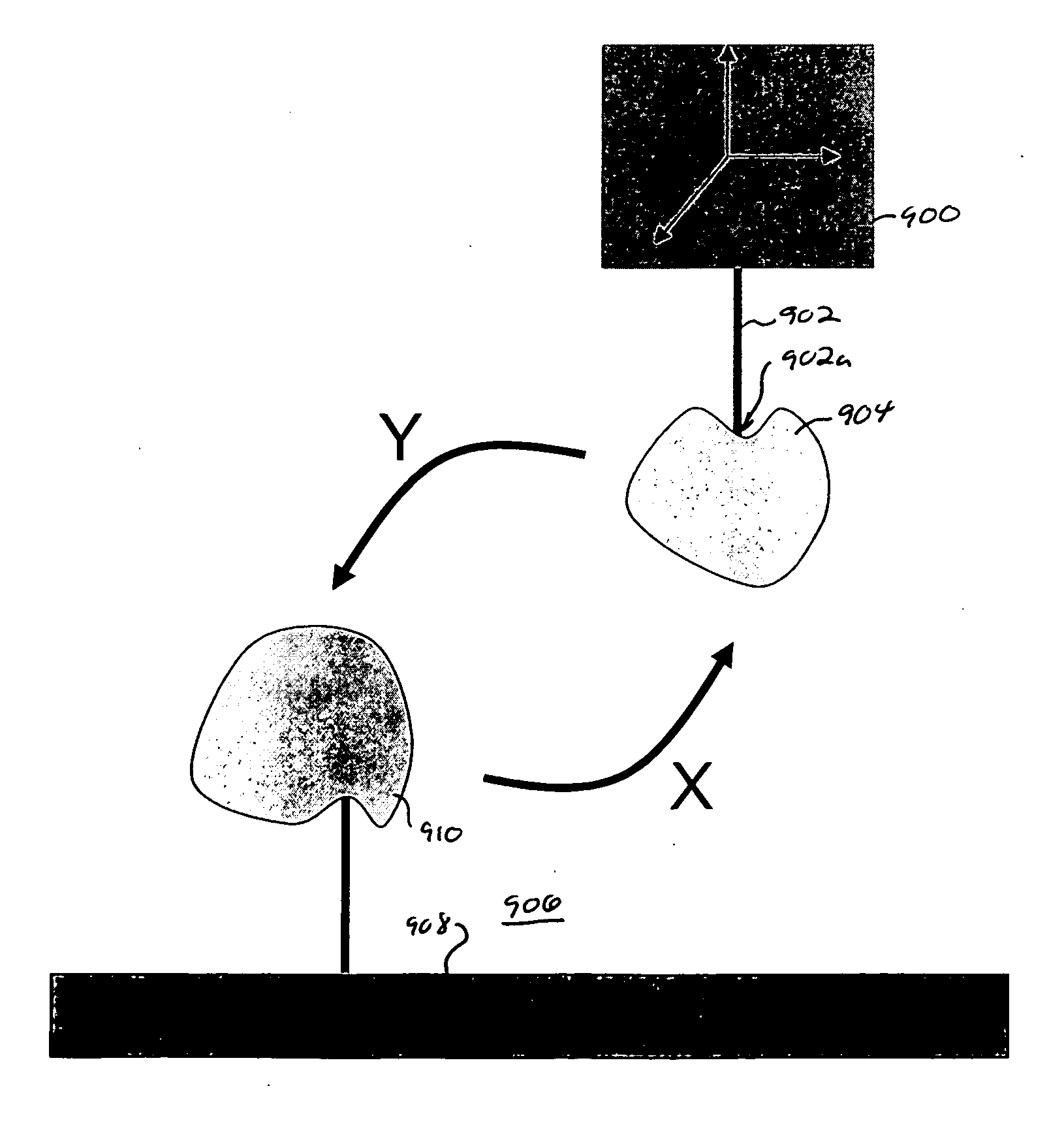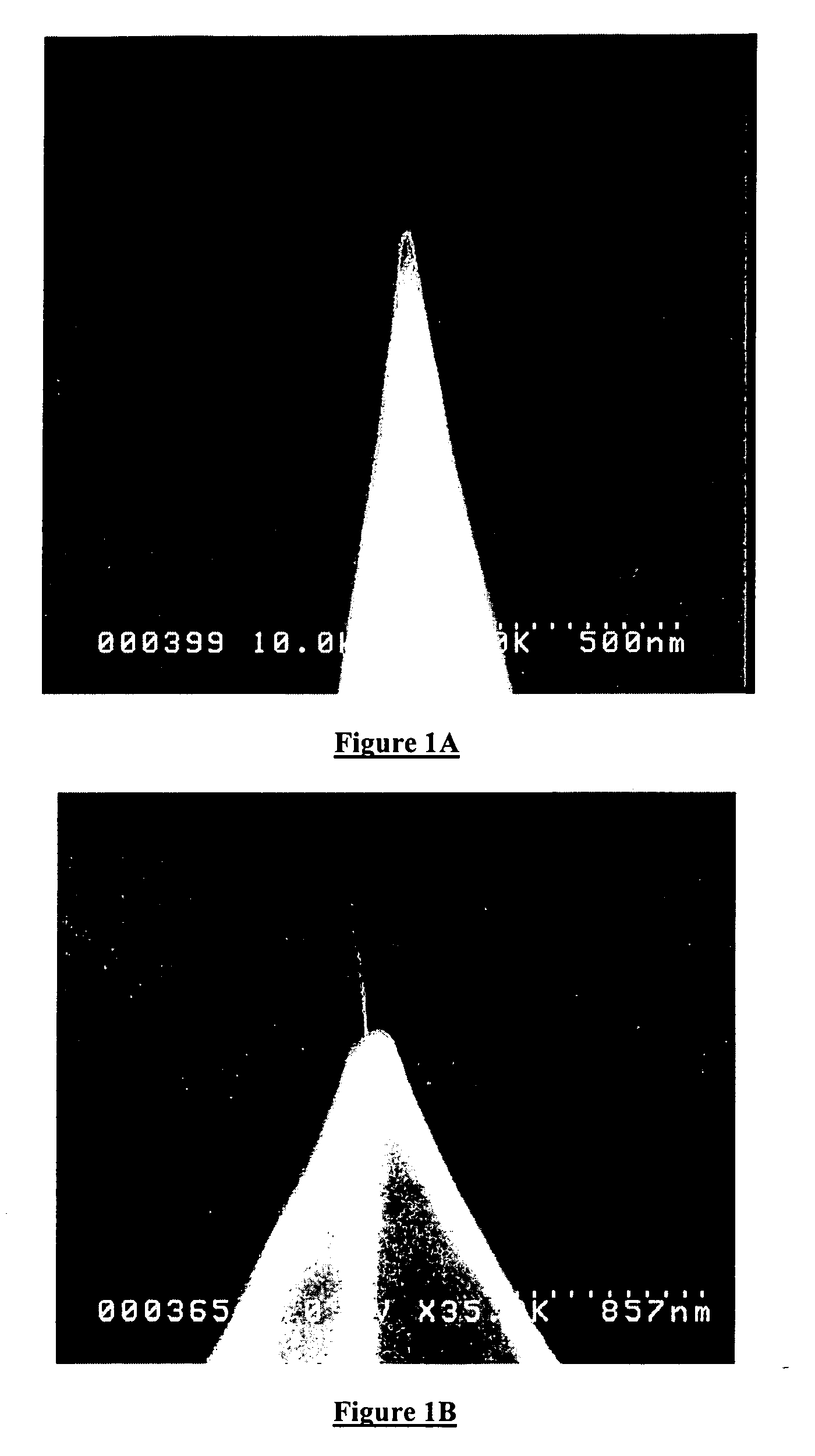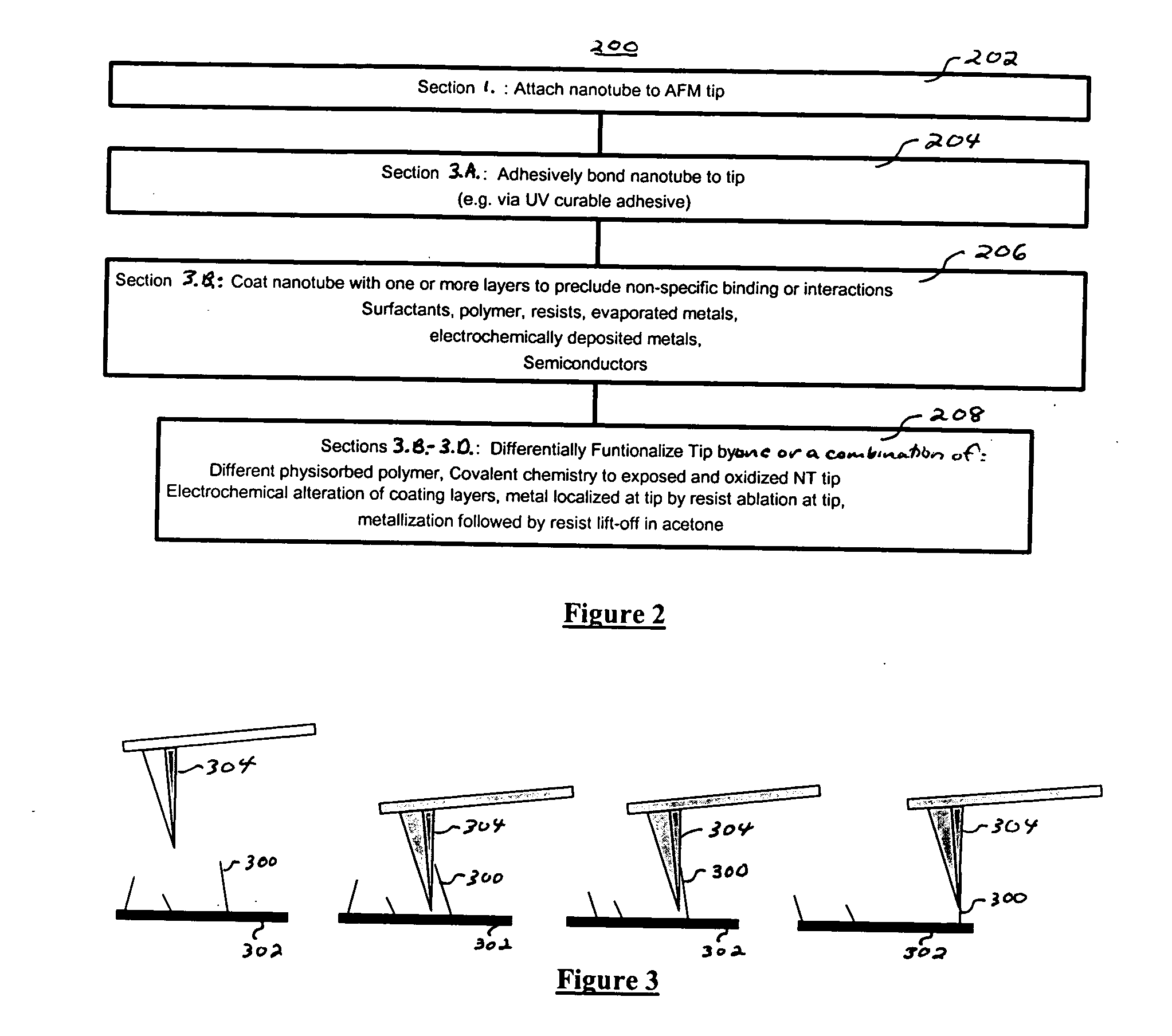Selective functionalization of carbon nanotube tips allowing fabrication of new classes of nanoscale sensing and manipulation tools
- Summary
- Abstract
- Description
- Claims
- Application Information
AI Technical Summary
Benefits of technology
Problems solved by technology
Method used
Image
Examples
Embodiment Construction
[0048] Embodiments in accordance with the present invention exploit the unique molecular recognition capabilities, mechanical and electronic properties, and length scale of carbon nanotubes, to construct molecule-specific actuators and manipulators integrated on scanning probes. These probes can also function as biosensors capable of detecting specific molecules, and sensing changes in (inter)molecular dynamics in combination with fluorescence detection. Interactions between SWNTs and specific biomolecules can be engineered through functionalization of the SWNTs, employing techniques previously developed to construct electronic biosensors based on nanotube transistors.
[0049] However, the devices described herein function substantially differently from conventional nanotube-based sensors detecting molecules through electronic transport measurements. In particular, the SWNT probe will serve as a molecular-scale structural support for fabrication of a specific device, through attachme...
PUM
| Property | Measurement | Unit |
|---|---|---|
| Power | aaaaa | aaaaa |
| Chemical properties | aaaaa | aaaaa |
| Biological properties | aaaaa | aaaaa |
Abstract
Description
Claims
Application Information
 Login to View More
Login to View More - R&D
- Intellectual Property
- Life Sciences
- Materials
- Tech Scout
- Unparalleled Data Quality
- Higher Quality Content
- 60% Fewer Hallucinations
Browse by: Latest US Patents, China's latest patents, Technical Efficacy Thesaurus, Application Domain, Technology Topic, Popular Technical Reports.
© 2025 PatSnap. All rights reserved.Legal|Privacy policy|Modern Slavery Act Transparency Statement|Sitemap|About US| Contact US: help@patsnap.com



